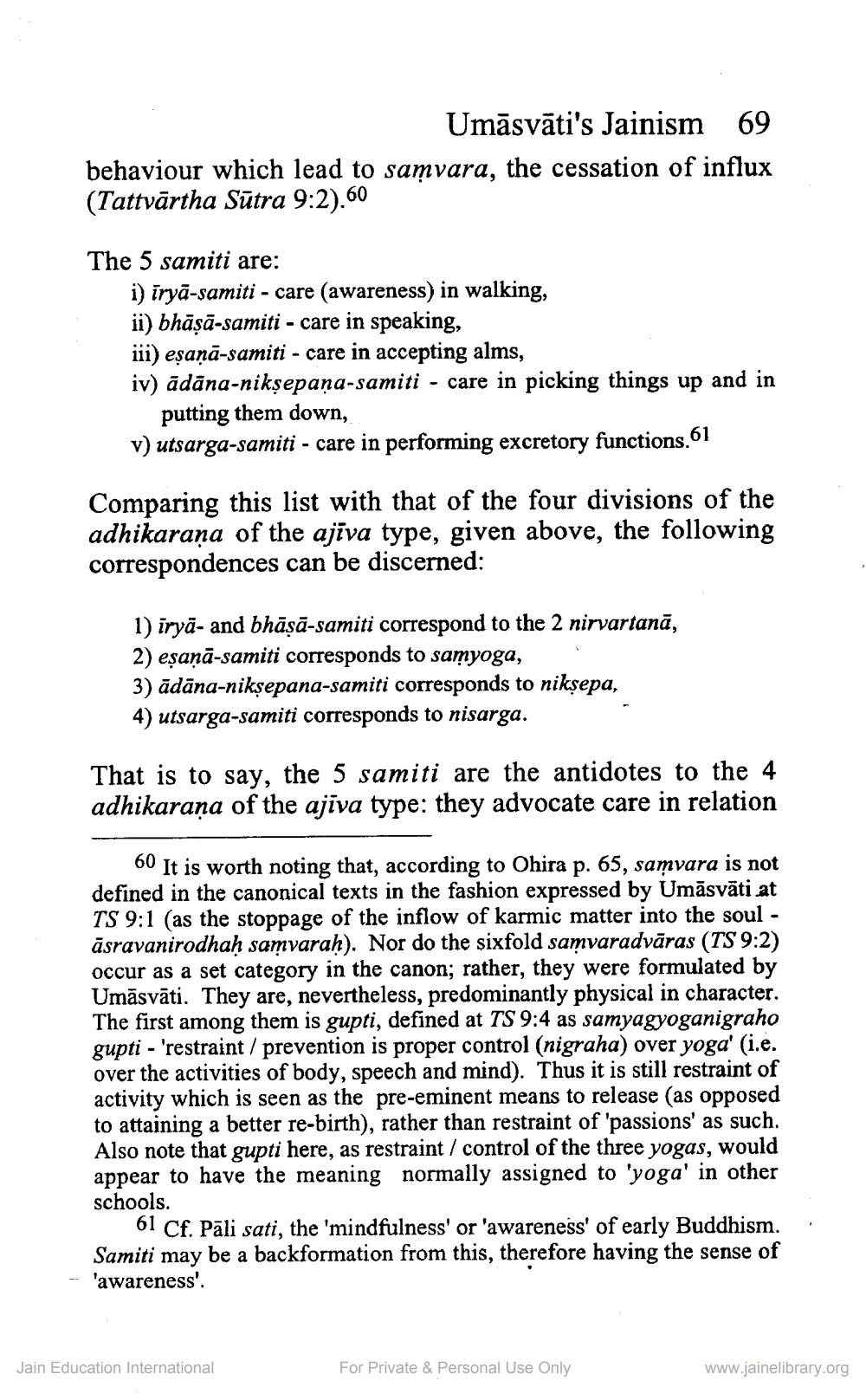________________
Umāsvāti's Jainism 69 behaviour which lead to samvara, the cessation of influx (Tattvārtha Sūtra 9:2).60
The 5 samiti are:
i) īryā-samiti - care (awareness) in walking, ii) bhāṣā-samiti - care in speaking, iii) esanā-samiti - care in accepting alms, iv) ādāna-nikṣepaņa-samiti - care in picking things up and in
putting them down, v) utsarga-samiti - care in performing excretory functions. 61
Comparing this list with that of the four divisions of the adhikaraņa of the ajiva type, given above, the following correspondences can be discerned:
1) īryā- and bhāsā-samiti correspond to the 2 nirvartanā, 2) eșaņā-samiti corresponds to samyoga, 3) ādāna-nikṣepana-samiti corresponds to niksepa, 4) utsarga-samiti corresponds to nisarga.
That is to say, the 5 samiti are the antidotes to the 4 adhikaraņa of the ajīva type: they advocate care in relation
60 It is worth noting that, according to Ohira p. 65, samvara is not defined in the canonical texts in the fashion expressed by Umāsvāti at TS 9:1 (as the stoppage of the inflow of karmic matter into the soul - āsravanirodhaḥ samvarah). Nor do the sixfold samvaradvāras (TS 9:2) occur as a set category in the canon; rather, they were formulated by Umāsvāti. They are, nevertheless, predominantly physical in character. The first among them is gupti, defined at TS 9:4 as samyagyoganigraho gupti - 'restraint / prevention is proper control (nigraha) over yoga' (i.e. over the activities of body, speech and mind). Thus it is still restraint of activity which is seen as the pre-eminent means to release (as opposed to attaining a better re-birth), rather than restraint of 'passions' as such. Also note that gupti here, as restraint / control of the three yogas, would appear to have the meaning normally assigned to 'yoga' in other schools.
61 Cf. Pāli sati, the 'mindfulness' or 'awareness' of early Buddhism. Samiti may be a backformation from this, therefore having the sense of 'awareness'.
Jain Education International
For Private & Personal Use Only
www.jainelibrary.org




